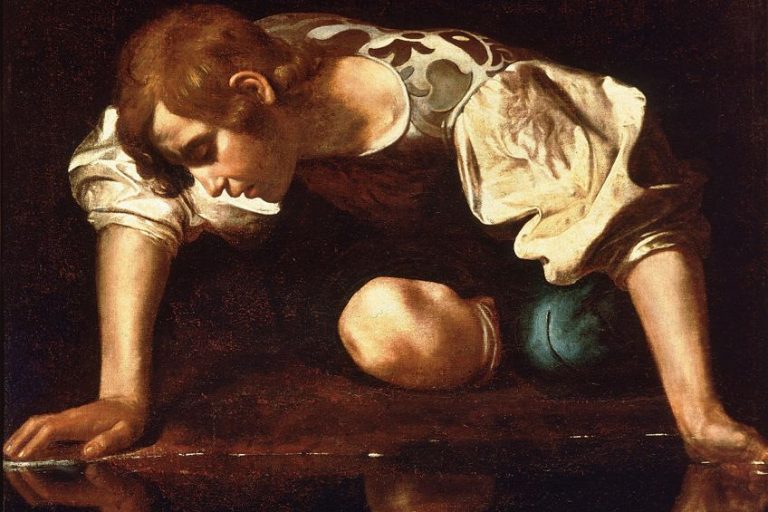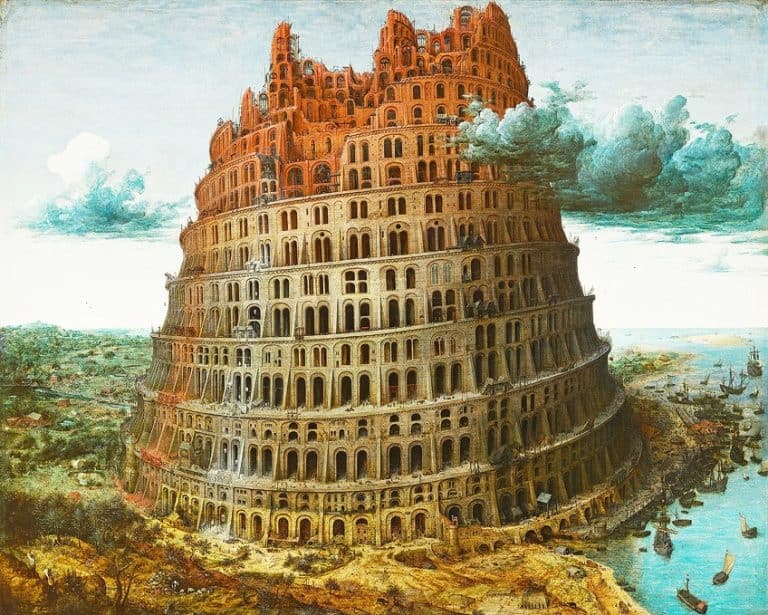“Fallen Angel” by Alexandre Cabanel – Famous Painting of Lucifer
Imagine falling in a downward flurry from a Heavenly place to land on a rocky surface, banished, outcast, and fuming with a silent fury that tenses each muscle in your body. This is what the famous painting of Lucifer by Alexandre Cabanel conveys and what we will explore and discuss in this article below.
The Fallen Angel (1847) by Alexandre Cabanel in Context
Below we will look at The Fallen Angel painting by the French Alexandre Cabanel in more detail. We will provide a brief contextual analysis, discussing why Cabanel painted it and what inspired him, followed by a formal analysis, discussing the subject matter and stylistic characteristics.
| Artist | Alexandre Cabanel |
| Date Painted | 1847 |
| Medium | Oil on canvas |
| Genre | Religious painting |
| Period / Movement | Academic art/Academicism |
| Dimensions | Approximately 121 x 189.7 centimeters |
| Series / Versions | An earlier version exists as a study, completed in 1846 |
| Where Is It Housed? | Musée Fabre, Montpellier, France |
| What It Is Worth | N/A |
Contextual Analysis: A Brief Socio-Historical Overview
Sybille Bellamy-Brown’s publication titled Procès-verbaux de l’Académie des Beaux-Arts (“Minutes of the Academy of Fine Arts”) is often quoted by various scholarly sources to highlight what critics said about Cabanel’s Fallen Angel painting when it was exhibited at the Salon in Paris.
It was described as too Romanticist, and critics reportedly said, “the movement is incorrect, the draughtsmanship imprecise, the execution inadequate”. The painting of Lucifer was classically rendered, depicting the fallen angel as a man of seemingly perfect symmetry and muscular proportion.
Interestingly, “The Fallen Angel” painting was also one of the first paintings to depict the Devil or Satan as the subject matter, and sources report that the jurists were “shocked” when they saw it.

Cabanel painted The Fallen Angel in 1847; he was 24 years old at the time and lived in Rome for a period because he won the “Second First Prize” for the Prix de Rome, which was a scholarship for French artists to live in Rome for several years to study the classical masters from antiquity. King Louis XIV started the scholarship during the 1660s.
While Cabanel lived in Rome, he submitted yearly paintings to Paris to the jury and was also well exposed to Renaissance painting styles from his studies in Rome, studying from the wide Renaissance painting collection through copying.
He was reportedly fond of the Renaissance painter Raphael, among others.
Furthermore, Cabanel studied under François-Édouard Picot, who also studied with the Neoclassical painter Jacques-Louis David. Some of his other artworks like The Death of Moses (1850) emulate the style of the Renaissance painter Raphael, as well as Michelangelo.

Another famous painting includes Cabanel’s The Birth of Venus (1863), which is housed in the Musée d’Orsay located in Paris. This painting has been considered one of Cabanel’s masterpieces from the French Academy art style and it caused quite a sensational response from critics when it was exhibited at the Paris Salon. Reportedly, Emperor Napoleon III also purchased it for himself.

Among Cabanel’s various Academic paintings of mythological and Biblical figures, he also painted portraits and became a successful and sought-after portraitist. He apparently painted over 200 portraits, the majority consisting of women. Furthermore, his portraits included numerous wealthy American patrons.
Cabanel’s art career grew when he returned to Paris after his stay in Rome.
Not only did he become a portraitist, but he also received commissions to paint the ceiling and wall panels of the Salon of the Péreire Mansion during the 1850s and 1860s. Cabanel also painted the ceiling and decorated a room for the wealthy businessman, Constant Say.
Cast Out of Heaven: Portraying the Devil
Religious and historical paintings usually included saints, angels, and heroic figures as subject matter, but as we mentioned earlier, Cabanel’s painting of Lucifer was among one of the first Academic paintings to portray the Devil.
Cabanel’s painting of Lucifer was inspired by the poem Paradise Lost (1667) by John Milton, who was an English writer and poet. Under the genre of an epic poem, Paradise Lost centers around Biblical narratives about Adam and Eve and what is called their “disobedience”, as well as the “rebellion” of Satan against God.
This also alludes to the narrative about the “War in Heaven” from verse 12 in the Book of Revelations in the Bible, describing how the Devil was cast out of Heaven for rebelling and deceiving God: “He was cast out into the earth, and his angels were cast out with him”.
Formal Analysis: A Brief Compositional Overview
The Fallen Angel by Alexandre Cabanel depicts the moment the Devil was cast out of Heaven. We will explore the subject matter further below along with a discussion about Cabanel’s stylistic approaches.

Subject Matter
In The Fallen Angel painting, we see the nude figure of the Devil in rocky surroundings; he is leaning and seemingly half-reclining and tensed manner against a long rock with a flat top. He appears to be elevated, as there appear to be signs of a mountainous region in the background and he is possibly on top of one of these mountains.
Around him, we will notice a green vine wreathed in the foreground, over the rock to the right and under the Devil’s legs, and out of our view to the right. Above him, and seemingly behind him due to his elevation, are several angels flying and floating in the vast expanse of sky, blending in with the blue of the heavens.
They seem to be rejoicing and celebrating.
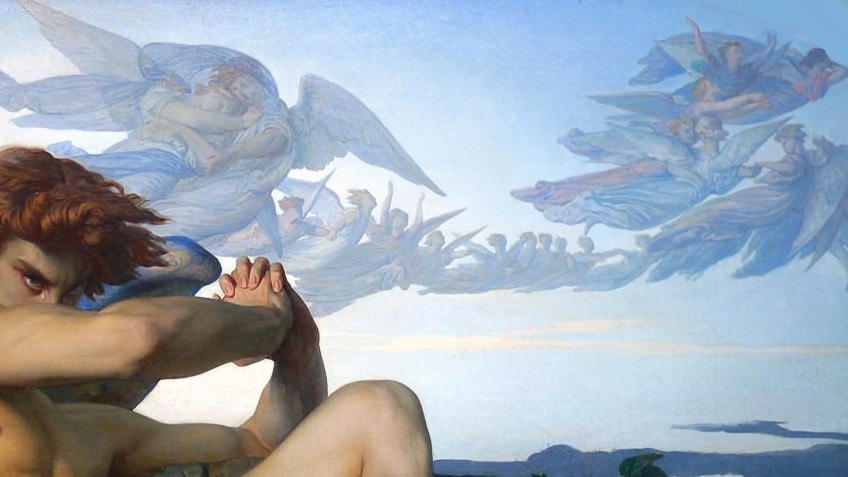
The figure of the Devil is the main focal point in this composition; he fills up most of the foreground with his large wings and mostly outstretched posture. As mentioned, he is depicted in the nude, his physique is well-defined by his musculature, and he almost sits as if he could be posing.
However, from understanding the context of the painting, it is clear that he just fell from the Heavens.
In the left portion of the composition, we see most of his right wing, the bottom feathers of which are slightly bending as they touch the rocky ground. He has golden brown and bushy short hair. His left arm, which is slightly out of our view, rests on the rock behind him, supporting his tensed reclining posture. His right arm is held up, almost at a 90-degree angle, and he is clasping both hands with intertwined fingers.
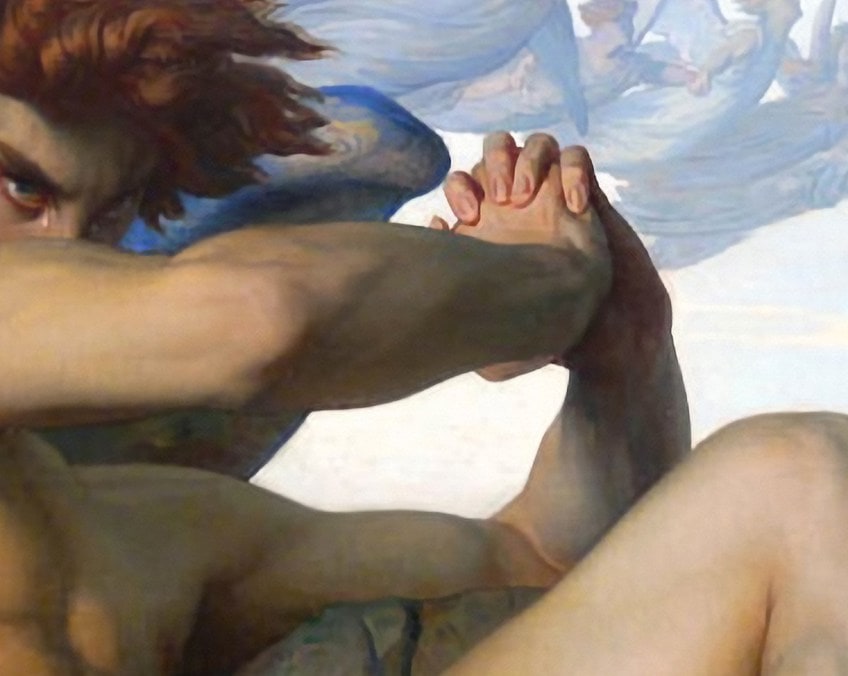
His right arm is in front of his face, which is lowered, and we can only see his eyes and where his nose starts. It appears as if he is hiding his face behind his right arm. His right eye (our left) is mostly in view, of which there is one large teardrop about to fall from it. If we look closely, it appears as if there is another teardrop from his left eye, which is more hidden and shaded.
This brings us to another important part of this painting of Lucifer, which is his seemingly scowling expression.
His eyes are fixed ahead of him and speaks a thousand words without saying anything; he is angry, defiant, and wrathful, and considering the context, he appears to be smoldering about what just happened to him. This is coupled with the fact that he is crying and his semi-alert posture, as if he is ready to strike.

Color and Light
There is a juxtaposition of color in The Fallen Angel painting, the foreground appears darker with the central figure of the Devil set against the dark browns from the rocks as well as the dark greens of the wreathing foliage around him. He also appears lighter in skin tone against the dark setting.
The background is lighter in color, with the heavens depicted in a light blue, and the Devil’s wings almost blend with both worlds.
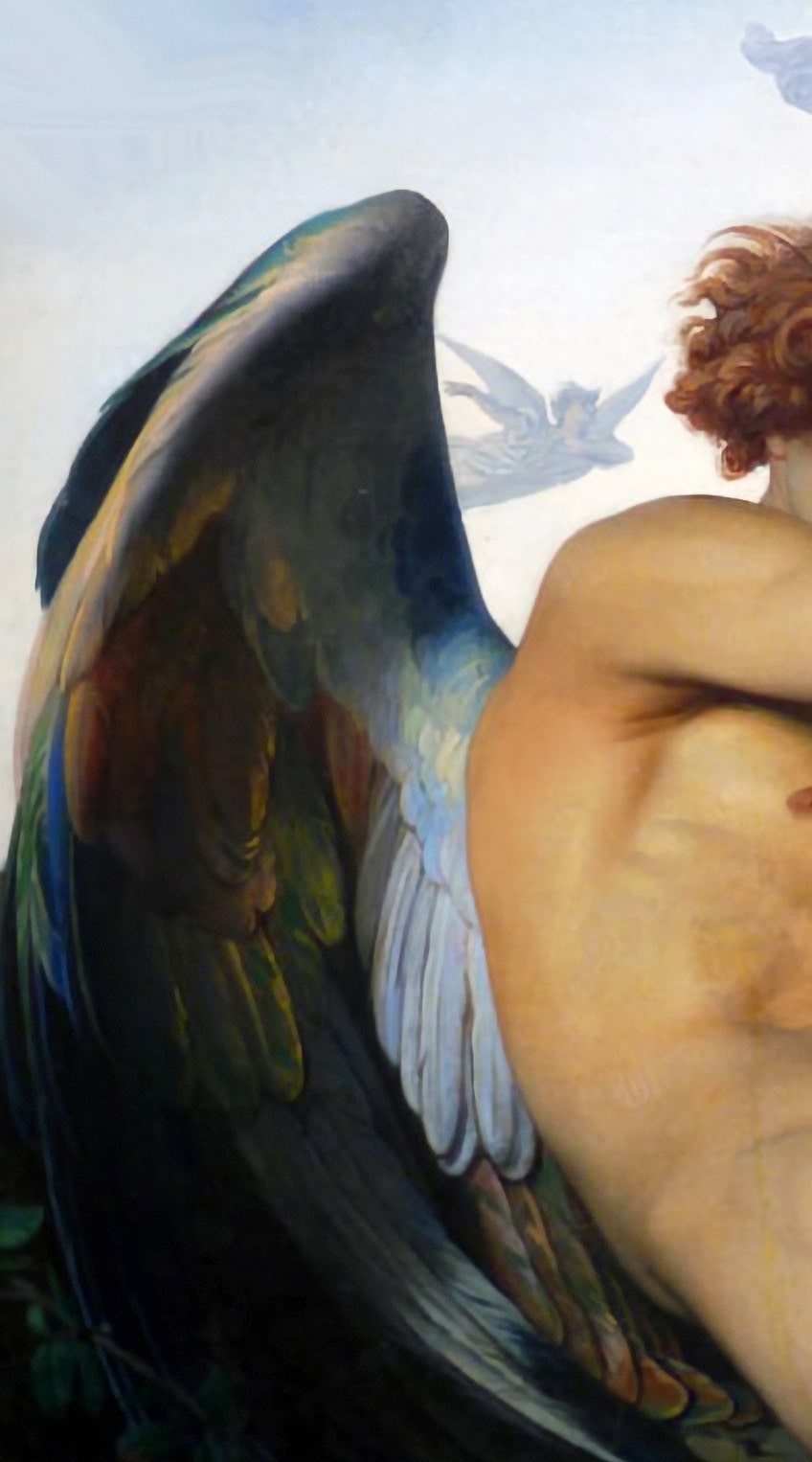
The bottom part of his wings are darker blues and browns and become lighter browns, blues, and white as they move upwards on his back, almost blending with the blue tones of the sky above. Cabanel did not utilize harsh colors in the painting of Lucifer; instead, there is a harmonious interplay of soft colors as well as light and shading, creating an overall unity of color and value.
His coloring has also been described as lighter, veering on the Rococo art style, which utilized brighter colors.
Shape and Line
In The Fallen Angel painting, there appears to be a harmonious interplay of lines and shapes too, with an emphasis on horizontal and curved lines. For example, the Devil’s shape in the foreground is seemingly echoed in the shape made collectively by the various figures in the background.

Furthermore, the left side of the composition is more rounded and closed because of the Devil’s large wing, which arches its way from the rocks in the foreground to the heavens, almost connecting the lower and upper portions of the painting. The right side of the painting is open, depicting a gap with a limited view of the landscape beyond and the darkened clouds.
Curved lines are visible in the Devil’s wings, the foliage, as well as the Devil’s physique, which also has a blend of vertical lines in his upper torso as he sits half-up with his posture.

The Beauty In the Details
Even though Cabanel had exposure to the great masters of painting from the Renaissance and ancient Roman art and sculpture, The Fallen Angel has been described as “Romanticist”, and maybe it was, considering the subject matter. However, Cabanel’s classical style, including that characteristic naturalism, is still evident in this composition coupled with his artistic prowess.
Depicting the Devil as a youthful man with the musculature we would see from the Classical Roman sculptures, Cabanel painted the Devil as a beautiful being cast out of Heaven. This being has also been described as a “handsome devil” by some art sources. Widely reproduced, the painting of Lucifer has become almost like a poster boy for beauty, a visual representation of the “bad boy” that so many swoon over, and still do. The beauty is in all the details of this 19th-century French rendition of an age-old Biblical narrative.
Take a look at our Fallen Angel painting webstory here!
Frequently Asked Questions
Who Painted The Fallen Angel?
The Fallen Angel (1847) was painted by the French artist Alexandre Cabanel. The painting is also titled L’Ange Dechu. Cabanel also painted a study of the same painting in 1846 titled Study for Fallen Angel.
What Is The Fallen Angel Painting Meaning?
The Fallen Angel (1847) painting by Alexandre Cabanel depicts the Devil when he was cast out of Heaven. The painting was inspired by John Milton’s poem Paradise Lost (1667) about the Devil’s defiance of God. It also references the War in Heaven found in the Book of Revelation in the Bible.
Where Is The Fallen Angel Painting Housed?
The Fallen Angel (1847) is housed at the Musée Fabre in Montpellier, France, alongside some of his other paintings. The museum also showcased an exhibition called Alexandre Cabanel, The Tradition of Beauty in 2010.
What Art Style Is The Fallen Angel by Alexandre Cabanel?
The Fallen Angel (1847) by Alexandre Cabanel was painted in the French Academic art style. Cabanel’s style evolved over time from the influences of Neoclassicism, Romanticism, as well as what is called the decorative French Rococo style.
Alicia du Plessis is a multidisciplinary writer. She completed her Bachelor of Arts degree, majoring in Art History and Classical Civilization, as well as two Honors, namely, in Art History and Education and Development, at the University of KwaZulu-Natal, South Africa. For her main Honors project in Art History, she explored perceptions of the San Bushmen’s identity and the concept of the “Other”. She has also looked at the use of photography in art and how it has been used to portray people’s lives.
Alicia’s other areas of interest in Art History include the process of writing about Art History and how to analyze paintings. Some of her favorite art movements include Impressionism and German Expressionism. She is yet to complete her Masters in Art History (she would like to do this abroad in Europe) having given it some time to first develop more professional experience with the interest to one day lecture it too.
Alicia has been working for artincontext.com since 2021 as an author and art history expert. She has specialized in painting analysis and is covering most of our painting analysis.
Learn more about Alicia du Plessis and the Art in Context Team.
Cite this Article
Alicia, du Plessis, ““Fallen Angel” by Alexandre Cabanel – Famous Painting of Lucifer.” Art in Context. May 9, 2022. URL: https://artincontext.org/fallen-angel-by-alexandre-cabanel/
du Plessis, A. (2022, 9 May). “Fallen Angel” by Alexandre Cabanel – Famous Painting of Lucifer. Art in Context. https://artincontext.org/fallen-angel-by-alexandre-cabanel/
du Plessis, Alicia. ““Fallen Angel” by Alexandre Cabanel – Famous Painting of Lucifer.” Art in Context, May 9, 2022. https://artincontext.org/fallen-angel-by-alexandre-cabanel/.







